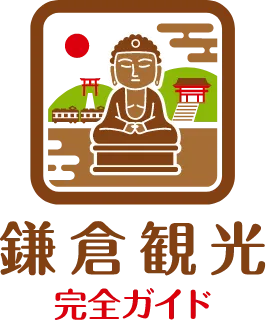Egara Tenjin Shrine (荏柄天神社)
Discover the History of Egara Tenjin Shrine
Nestled in a quiet valley known as a yato in Kamakura (鎌倉), Egara Tenjin Shrine is one of the three oldest Tenjin shrines in Japan. It is said to have originated in the early 12th century when a statue of Tenjin, or Sugawara no Michizane (菅原道真), descended from the sky during a thunderstorm. Moved by the event, the local people built the shrine to enshrine the image.
Minamoto no Yoritomo (源頼朝), founder of the Kamakura shogunate, regarded the shrine as spiritually vital since it faced the northeast—the traditional kimon (“demon gate”) direction. During the time of the second shogun, Minamoto no Yoriie (源頼家), court official Oe no Hiromoto (大江広元) was dispatched to lead a grand memorial ceremony commemorating the 300th anniversary of Sugawara no Michizane’s passing. The shrine continued to be protected by powerful families such as the Hojo (北条), Ashikaga (足利), Toyotomi (豊臣), and Tokugawa (徳川).
Highlights: Architecture, Nature, and Spiritual Atmosphere
The current main hall was reconstructed in the early 17th century using the former Wakamiya building from Tsurugaoka Hachimangu Shrine (鶴岡八幡宮). It is now designated as an Important Cultural Property of Japan. Reflecting Kamakura-period architectural style and surrounded by serene grounds, the hall offers a deeply spiritual experience.
A key highlight is a 900-year-old sacred ginkgo tree, believed to have been planted to prevent stepping on the site where the statue of Tenjin descended. In autumn, the tree’s golden leaves create a magnificent display. A camphor tree over 400 years old also adds seasonal color and character.
Blessings and Cultural Significance
Sugawara no Michizane is venerated as the deity of learning and scholarship. Many students, researchers, and those pursuing intellectual goals visit to pray for academic success. Various charms are available, including protective pouches, plum-blossom amulets, prayer pencils, and success rakes. You can also receive formal blessings in the shrine or arrange for proxy prayers on your exam day.
Seasonal Experiences and Local Tastes
In spring, red and white plum blossoms bloom throughout the shrine grounds. The combination of kan-kobai and kodai-aijiku varieties lends an elegant, intellectual ambiance. After making a wish, many visitors pause to reflect at the ema (wooden prayer plaques), enjoying the peaceful surroundings.
Omikuji, Goshuin, and Unique Traditions
The shrine also offers goshuin (shrine stamps), a meaningful souvenir for many. It is notable for hosting brush memorial rituals for artists—particularly manga creators like Shimizu Kon (清水昆)—with dedications such as the Kappa Brush Mound and the Picture Brush Memorial. Also noteworthy is the calligraphy by Yasunari Kawabata (川端康成), a Nobel laureate in literature.
How to Get There from Tosh’s Place (トシズプレイス)
From Kamakura Station (鎌倉駅), it’s a 25-minute walk or a 15-minute bus ride. The shrine is open from 8:30 AM to 4:30 PM, and you can receive blessings and purchase charms during these hours. If you’re staying at Tosh’s Place (トシズプレイス), the walk is both pleasant and convenient in the early morning or around sunset.
When Is the Best Time to Visit?
Egara Tenjin Shrine (荏柄天神社) reveals different charms with each season—plum blossoms in spring and the golden ginkgo in autumn. For a quiet visit, mornings after breakfast or late afternoons are ideal. With flexible hours, guests of Tosh’s Place can fully enjoy these serene time windows.
Photo Highlights and Must-See Spots
Within walking distance, you’ll find Kamakura-gu Shrine (鎌倉宮), Sugimoto-dera Temple (杉本寺), Kakuon-ji Temple (覚園寺), and Jomyo-ji Temple (浄妙寺)—historic places that invite slow, thoughtful exploration. The area is also home to unique bakeries and sweet cafés, perfect for a break between sightseeing.
Embrace the Quiet Hours of Morning
If you’re the type of traveler who enjoys spiritual reflection, artistic inspiration, or slow-paced exploration, Egara Tenjin Shrine offers an ideal setting. Whether you’re preparing for exams or seeking peace of mind, early mornings or evenings—especially while staying at Tosh’s Place—offer unmatched tranquility.
Wrap-Up: Egara Tenjin Shrine and a Thoughtful Kamakura Experience
Egara Tenjin Shrine in Kamakura (鎌倉) is a multi-faceted destination—honoring a god of learning, showcasing historic architecture, and blending natural beauty with artistic traditions. Its peaceful ambiance invites introspection and connection. For guests enjoying the freedom of staying at Tosh’s Place (トシズプレイス), it’s a perfect stop to enrich both mind and spirit.
